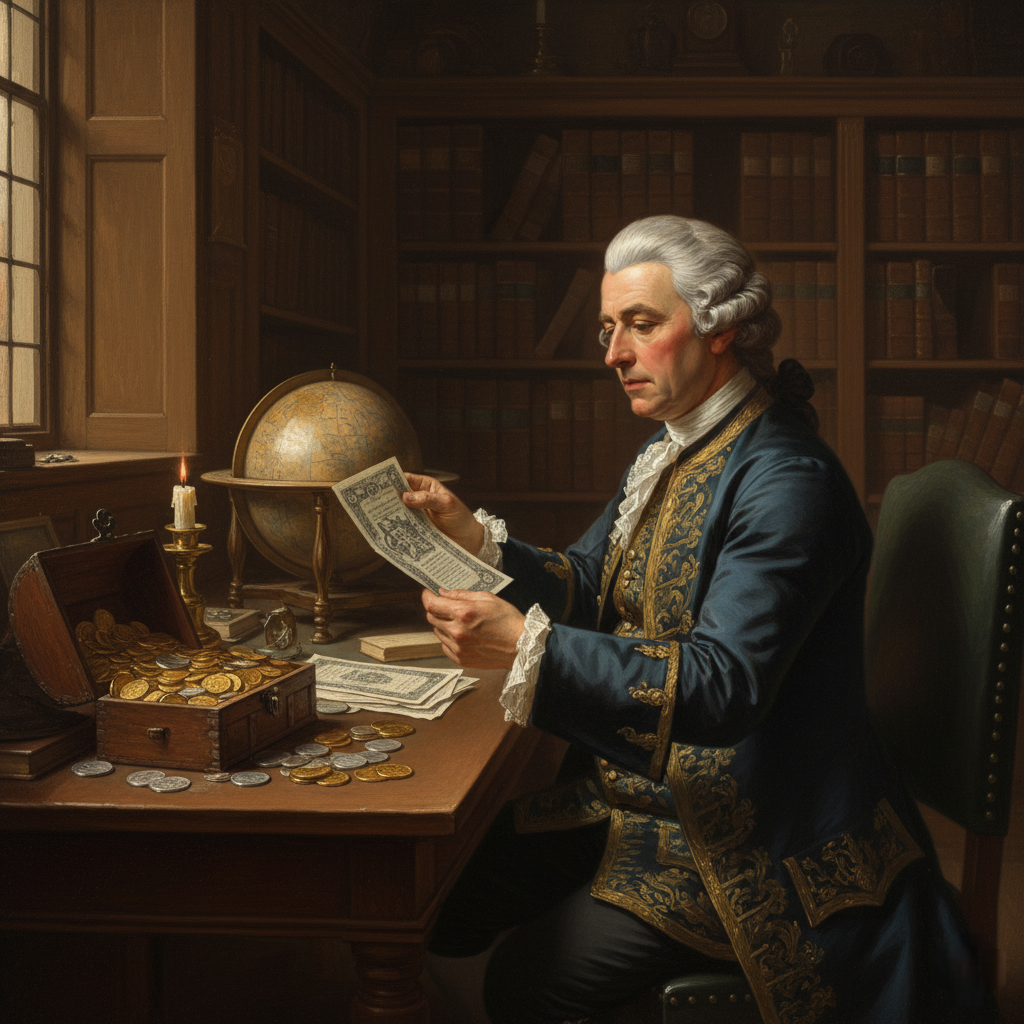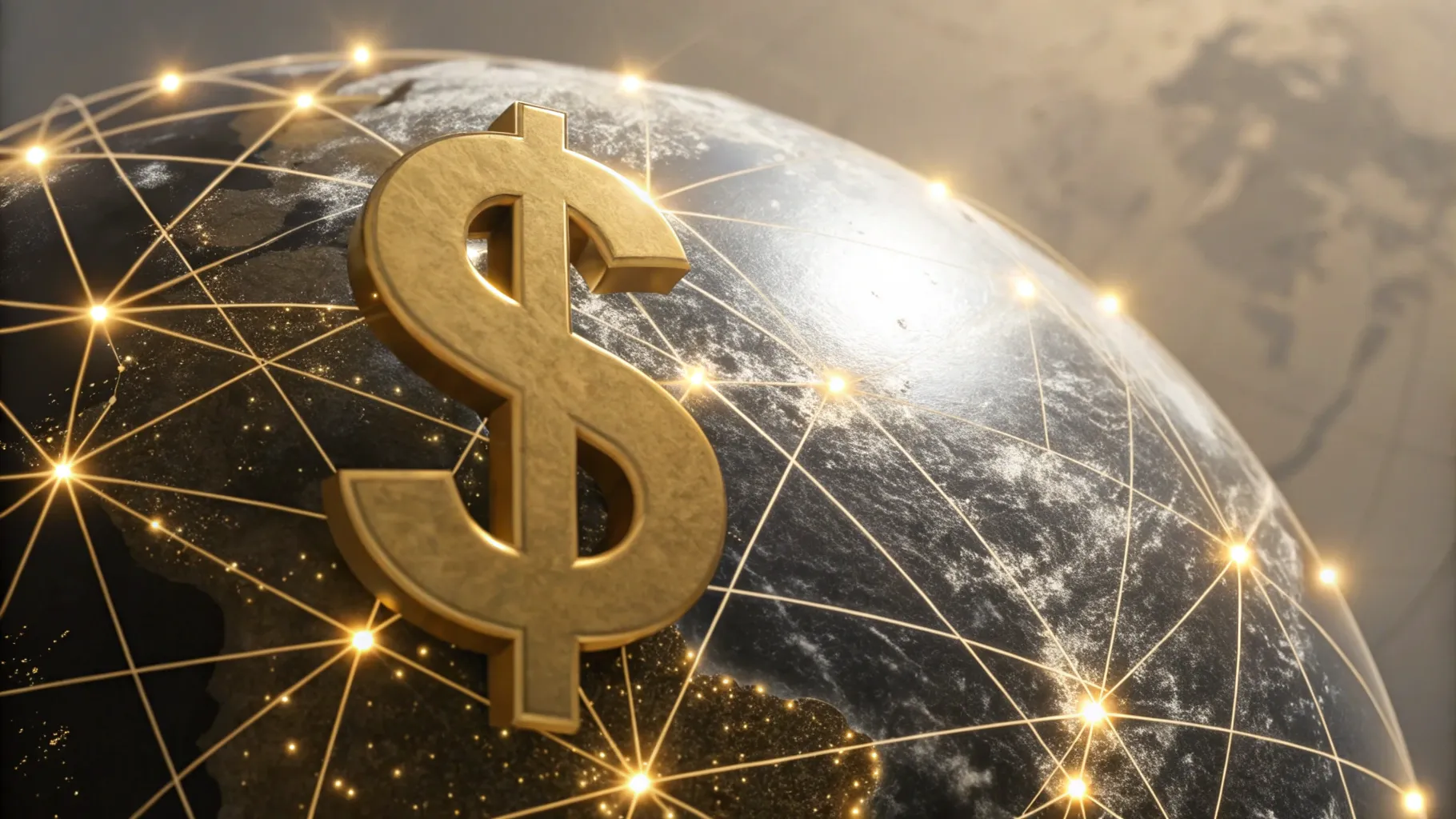Key Takeaways
- GDP is the main way to measure a country’s economic size and health.
- GDP is calculated using three methods: spending, production, and income.
- GDP doesn’t always reflect a country’s overall development or the well-being of its citizens.
- Global economic growth is currently driven by different regions, with Asia leading the way.
What Is GDP and Why Does it Matter?
Gross Domestic Product, or GDP, is one of the most important ideas in economics. Think of it as a scorecard that shows the total value of everything a country produces. It measures all the final goods and services—from cars and computers to haircuts and doctor’s visits—made within a nation’s borders over a certain period, usually a year.
Governments, businesses, and economists use GDP to understand how well an economy is doing. A rising GDP usually signals a healthy economy with more jobs and more money being made. A falling GDP can be a warning sign of a recession. While GDP is great for measuring economic activity, it doesn’t tell the whole story about a country’s progress or its people’s quality of life. For that, you need to look at other things, too, like healthcare and education.
The Importance of GDP in the Global Economy
GDP is the primary tool for seeing how countries stack up against each other economically. It serves several crucial roles:
- Benchmarking Economic Performance: It provides a standard way to compare the economic strength of countries. For instance, comparing the GDP of the United States to that of Germany gives a clear picture of their relative economic sizes.
- Policy Formulation: Governments rely on GDP data to create and adjust their policies. If GDP growth is slow, a government might decide to lower taxes or increase spending to boost the economy.
- Investment Decisions: Investors and businesses closely watch GDP trends. Strong GDP growth in a country often means a good environment for new investments, while slow growth might make them more cautious.
- International Comparisons: Global organizations like the International Monetary Fund (IMF) and the World Bank use GDP figures to understand global economic health, decide where to offer financial aid, and set economic priorities for different regions.
While GDP provides essential insights into economic performance, it does not tell the complete story about a nation’s development or the well-being of its citizens.
How Do We Measure GDP?
There are three main ways to calculate GDP, and in theory, they all should give the same result. They just look at the economy from different angles.
The Expenditure Approach: The “Spending” Method
This is the most common way to calculate GDP. It adds up all the money spent on final goods and services in the economy. The formula is:
GDP=C+I+G+(X−M)
- C is Consumer Spending: This is all the money that individuals and households spend on things like food, clothing, and entertainment.
- I is Investment: This includes money businesses spend on new factories, machinery, or buildings, as well as the money people spend on new homes.
- G is Government Spending: This is the money the government spends on things like building roads, paying public workers, and buying military equipment.
- X – M is Net Exports: This is the total value of a country’s exports (goods sold to other countries) minus the total value of its imports (goods bought from other countries).
The Production (Output) Approach: The “Value-Added” Method
This method focuses on what is produced. It tallies up the value that is added at each step of production. For example, when a car is built, you would add the value of the tires, the engine, and the steel to get the final product’s value. This method avoids counting the same items multiple times.
The Income Approach: The “Earning” Method
This approach adds up all the income earned from producing the goods and services. This includes wages paid to workers, profits earned by businesses, rent income, and interest on loans. This method measures the total income generated by all the economic activity in a country.
Key Terms for Understanding GDP Numbers
To get a true picture of economic growth, it’s important to understand a few different types of GDP:
- Nominal GDP: This is GDP measured using current market prices. It can be misleading because if prices (due to inflation) go up, nominal GDP can rise even if the country isn’t producing more.
- Real GDP: This is GDP adjusted for inflation. It’s a much better measure because it shows the actual increase in production, not just a rise in prices.
- GDP Per Capita: This is a country’s total GDP divided by its population. It gives an idea of the average economic output per person. A high GDP per capita often suggests a higher average standard of living.
Top Economies: Countries with the Highest GDP
As of 2025, the largest economies by nominal GDP are dominated by a few major players. These countries lead the global economy due to a mix of large populations, diverse and innovative industries, and big investments in technology and infrastructure. The United States, with an estimated nominal GDP of over $27 trillion, leads the way, followed by China, Germany, and India. Other top economies include Japan, the United Kingdom, France, Italy, Canada, and Brazil.
Why High GDP Doesn’t Always Mean High Development
It’s easy to think that a country with a high GDP must be a great place to live, but that’s not always true. GDP has some major blind spots when it comes to measuring true development and the well-being of a country’s people.
- Income Inequality: In some countries, a high GDP might mean that a small number of people are very wealthy, while a large portion of the population lives in poverty. GDP doesn’t show how wealth is spread out.
- Uneven Development: A country’s economic growth might be driven by a single industry, like oil or mining. This can make the GDP look good, but it might not translate into better schools, hospitals, or roads for the general population.
- Ignoring Quality of Life: GDP doesn’t measure things that are critical to our well-being, such as clean air and water, access to quality healthcare, happiness, or social stability. A country could have a very high GDP but suffer from high pollution or political problems.
- Political and Social Challenges: Corruption or political instability can prevent economic gains from reaching the people. Even with a growing GDP, poor governance can hold a country back from real social progress.
Recent Global GDP Trends and Drivers of Growth
The global economy has seen a lot of change recently, impacted by things like the COVID-19 pandemic, conflicts, and rising inflation. The overall trend is a slowdown in global growth.
- Asia’s Economic Powerhouse: Asia, especially countries like China and India, continues to be a major engine for the world economy. Their rapid growth rates are often much higher than the global average, helping to drive overall world growth.
- North America and Europe: These regions have more mature economies and tend to grow at a slower, more stable pace. While they still contribute a great deal to the global economy, their growth is not as explosive as in some emerging markets.
- Emerging Markets: Growth in places like Africa and Latin America is a mixed bag. Some countries are experiencing strong growth, while others are still dealing with political instability and economic issues.
Currently, global growth is being held back by several factors, including trade disputes, high inflation in many countries, and a general sense of uncertainty that makes businesses and consumers more cautious about spending and investing.
The Full Picture Beyond GDP
GDP is a powerful and essential tool for measuring a nation’s economic output and performance. It gives us a clear snapshot of a country’s economic health and helps inform important decisions. However, to get a complete understanding of a nation’s true progress, we need to look beyond GDP. We must consider other indicators that measure things like income equality, education, healthcare, and environmental quality. By using GDP along with these other measures, we can build a much more accurate and comprehensive picture of a country’s development and the well-being of its people.
Frequently Asked Questions (FAQs)
What is the difference between GDP and GNP?
GDP measures all goods and services produced within a country’s borders, regardless of who produced them. GNP (Gross National Product) measures all goods and services produced by a country’s residents, no matter where they are located. For example, the profits of a U.S. company operating in another country would be counted in U.S. GNP but not in its GDP.
Why is “real GDP” more important than “nominal GDP”?
Real GDP is more important because it removes the effects of inflation. This allows for a much more accurate comparison of a country’s economic output over time. Nominal GDP can rise just because prices are going up, even if the actual amount of goods and services produced stays the same.
Can a country have a high GDP but a low quality of life?
Yes. A high GDP might not benefit everyone in a country. Factors like income inequality, pollution, and a lack of access to healthcare or education can all lead to a low quality of life even in a wealthy nation.
How does a recession relate to GDP?
A recession is generally defined as a significant decline in economic activity. Economists often use two consecutive quarters of negative real GDP growth as a key indicator that a country is in a recession.





